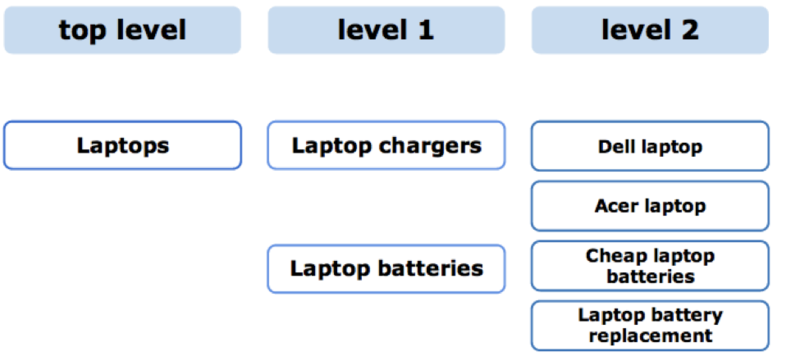When, Where, And How To Use Primary Keywords And Secondary Keywords

Table of Contents
- The Importance of Keywords
- Primary Keyword Examples
- Secondary Keyword Examples
- Understanding Long-tail Keywords
- Proper Keyword Research
- Keyword Research Tools
- Key Takeaways
- Conclusion
- FAQs
As a digital marketer, you want your content to be noticed by all the right people. How can you increase the chances of this? After all, there are already so many blogs, websites, and other digital content. The answer: keywords.
Keywords serve two functions. First, they tell search engine crawlers about your website’s content. The search engines rank your page based on this and other factors. Second, primary keywords and secondary keywords are the terms that consumers type into a search engine to find the content they are interested in. Both these factors make your website appear in search results.
Websites with high rankings don’t only have relevant keywords. They also have quality, performance, and authority. However, without appropriate keywords, the consumer’s chances of discovering your page are low. In short, keywords drive organic traffic to your online offerings. This can lead to higher awareness and conversions.

Understanding and Using Primary Keywords
We’ve mentioned two types of keywords: primary keywords and secondary keywords. For effective SEO, marketers need to distinguish between the two.
Let’s look at primary keywords first. These are words and phrases with high search volumes. A high search volume indicates words relating to topics that consumers want to know about. They frequently type these words into search engines to find answers.
Generally, primary keywords are targeted to an unsegmented audience. They should be spread out across your site. Most people include at least two or three primary keywords on each page. Using the primary keywords in the opening and closing paragraphs of content is an effective tactic. The main content isn’t the only place where primary keywords are used. You should also use them in the page title, descriptions, and links.
When effectively used, primary keywords can draw many visitors to your site. Think of them as well-placed magnets to pull in consumers.
Primary keyword examples
Let’s suppose you need to attract people who like to drink coffee. In this case, among the primary keywords would be “coffee shops,” “coffee shops near me,” and “espresso.” As you can see, most coffee-drinkers are searching for a place to enjoy their favorite beverage. This itself can give you an insight into their preferences.
You can use these primary keywords even if you aren’t in the coffee shop business. Let’s say you’re selling a domestic coffee-maker. Your content can use primary keywords to demonstrate that you can get the same enjoyment by simply sitting at home.
Depending on the nature of your proposition, you can use other primary keywords. In the case of a coffee-maker, you can find primary keywords that deal with entertaining guests at home, for example. Or, if the coffee-maker specializes in certain kinds of beverages, your keywords would be “cappuccino” or “mocha,” depending on their relevance.
Understanding and Using Secondary Keywords
Secondary keywords add context to searches. When used with primary keywords, they give search engines clues about search intent. Many consumers can be drawn in with the right use of secondary keywords.
It’s important to use secondary keywords because they fine-tune your content. A broad mass of online sites uses primary keywords, but secondary keywords narrow down the options. That means you receive traffic that’s tailored for your offerings.
Secondary keywords can also help sites move up in search engine results. This is because they add value and depth to the content. Your content can cover the subtopics and nuances that consumers need with secondary keywords. The more the content satisfies these needs, the better your page rank. All of which results in more traffic.
Secondary keyword examples
Let’s continue with the coffee example we spoke about. In this case, the secondary keywords add depth to the search. Some of them could be: “filter coffee,” “black coffee,” “coffee cup,” and “making cappuccino.” You can use these and more depending on the context of your business.
When your content includes these secondary keywords, it will become more relevant to the people you want to attract. If you’re manufacturing coffee-makers, other secondary keywords would be:
- coffee at home
- coffee health benefits
- best coffee maker
In combination with the primary keywords, these secondary keywords ensure that search engines rank your content in the best way. The chances are that the rate of conversions will also be boosted.
To sum up, although secondary keywords are less-used search terms, they add value to primary keywords. They make sure your content is appropriately organized to reach potential consumers.
Understanding Long-tail Keywords
Apart from primary and secondary keywords, another category is important for SEO optimization. These are long-tail keywords.
Long-tail keywords are those where the intent of the search is made clear. While several websites use primary and secondary keywords, long-tail keywords make your website stand out because of added relevance. There is less competition. The chances of your content reaching the right people are increased.
If you’re a new or a small company that sells laptops, it can be hard to be among the top-ranked sites with primary keywords such as “laptops” or “buy laptop.” However, if you use long-tail keywords to attract consumers with specific interests, you boost the possibility of your content reaching them. In this case, long-tail keywords could be:
- cheapest energy-efficient laptops
- low-cost gaming laptops
- laptops with best battery life
As you can tell, long-tail keywords are generally used by consumers who already know the category. They are close to making a purchase. That is why it is important to identify and incorporate the search terms that such consumers use.

Proper Keyword Research
It’s critical to research keywords properly. Doing well can ensure that organic website traffic is greater than paid traffic or ads. Otherwise, your website can remain obscure, with too few hits to make a difference.
The process starts by understanding the mind of the consumer. What are they looking for, and what is their intent? They could seek general information, look for a specific way to do something, compare products, or search for the right product to meet their needs.
Keyword research should cover all these aspects. To begin with, you should make a general list of subjects related to your business. For example, if you run a travel business, you can try:
- holidays
- tourism
- holiday packages
- summer travel
Then, you can dig a little deeper. After analyzing consumer intent and matching it with your specific offerings, you can add specific keywords such as:
- 2022 holiday to Europe
- family packages for Switzerland
- best budget hotels in France
You can find related search terms by typing current keywords into a search engine and seeing what comes up. You can further refine your primary and secondary keywords by using keyword tools.
Some Great Keyword Research Tools

Your keyword research will lay the groundwork. After that, many marketers turn to keyword research tools for efficient SEO optimization. These tools provide valuable information about search terms, search volumes, and competitive activity.
Keyword research tools come in both free and paid versions. To begin with, there is the Google Keyword Planner. This gives you insights into how often keywords are searched. It also shows you how these searches have changed over time. This lets you narrow down your list of keywords into those that are effective.

Another valuable tool is Answer the Public. This one monitors autocomplete data from search engines. It discovers useful phrases and questions that people are asking around your keyword. In this way, it generates fresh insights.
Semrush’s Keyword Magic Tool and Moz Keyword Explorer are other professional-level keyword tools. These easy-to-use formats provide the keywords and other data you need to build your campaigns.
Key Takeaways
- Keywords tell search engines about website content so that it can be categorized and ranked. Importantly, they are the phrases consumers use when searching for online content.
- Primary keywords and secondary keywords drive organic traffic to your online content. This leads to higher traffic and awareness. With time, conversions will also get a boost.
- Primary keywords have high search volumes. Secondary keywords add context and help to fine-tune content in terms of user intent.
- Long-tail keywords are more specific. They are typically used by consumers who are close to making a decision.
- Keyword research starts with analyzing what consumers need and are searching for. You can list broad topics related to the category. After this, specific search terms can be ascertained.
Conclusion
Keywords are the link between your web content writing and what the consumer is searching for. The proper use of primary keywords and secondary keywords moves your website up the search rankings and improves the chances of being discovered.
Other factors improve rankings, but keywords are among the most important. With proper keyword research and SEO-optimized content, you’re well on your way to greater awareness and higher traffic.
FAQs
Keywords are the phrases people type into search engines to find what they need. For example, if you were searching for a pair of shoes, you would type “men’s leather shoes” or “running shoes,” depending on your requirement.
Primary keywords should be used in the tags and meta descriptions. They should also appear at the beginning and the end of the piece of content. They should be woven naturally into the content. It should not feel stuffed.
Secondary keywords refine and add context to primary keywords. They provide value by focusing the content on what the consumer requires.
Primary keywords are those that are closely related to your business or activity. Secondary keywords add detail. For example, “air conditioner” is a primary keyword. “Split level air conditioner” is a secondary keyword.
You can categorize keywords based on user intent. These four categories are:
1. Commercial
2. Transactional
3. Informational
4. Navigational
Latest Blogs
Learn how to rank on AI search engines like ChatGPT, Perplexity, and Gemini by optimizing your content for authority, structure, and relevance. Stay ahead in AI-driven search with this strategic guide.
Explore the best healthcare SEO services for your medical practice. Improve online visibility and effectively reach more patients in need of your services.
Discover top social media agencies specializing in banking solutions, enhancing financial services and driving engagement.
Get your hands on the latest news!
Similar Posts

Artificial Intelligence
6 mins read
The Role of AI in Digital Marketing: AI Article Generators Transforming Content Creation

Artificial Intelligence
4 mins read
How AI Content Creator Is Shaping the Future of Digital Content

Digital Marketing
3 mins read